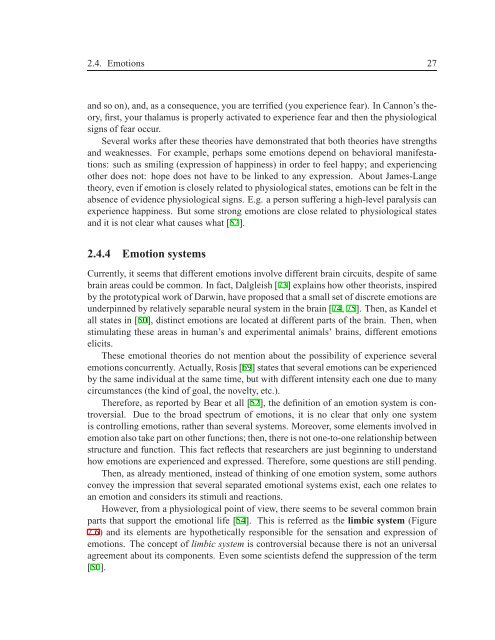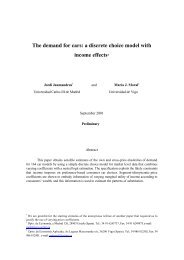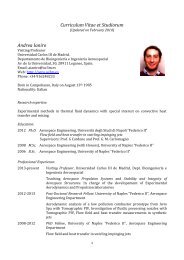TESIS DOCTORAL - Robotics Lab - Universidad Carlos III de Madrid
TESIS DOCTORAL - Robotics Lab - Universidad Carlos III de Madrid
TESIS DOCTORAL - Robotics Lab - Universidad Carlos III de Madrid
You also want an ePaper? Increase the reach of your titles
YUMPU automatically turns print PDFs into web optimized ePapers that Google loves.
2.4. Emotions 27and so on), and, as a consequence, you are terrified (you experience fear). In Cannon’s theory,first, your thalamus is properly activated to experience fear and then the physiologicalsigns of fear occur.Several works after these theories have <strong>de</strong>monstrated that both theories have strengthsand weaknesses. For example, perhaps some emotions <strong>de</strong>pend on behavioral manifestations:such as smiling (expression of happiness) in or<strong>de</strong>r to feel happy; and experiencingother does not: hope does not have to be linked to any expression. About James-Langetheory, even if emotion is closely related to physiological states, emotions can be felt in theabsence of evi<strong>de</strong>nce physiological signs. E.g. a person suffering a high-level paralysis canexperience happiness. But some strong emotions are close related to physiological statesand it is not clear what causes what [52].2.4.4 Emotion systemsCurrently, it seems that different emotions involve different brain circuits, <strong>de</strong>spite of samebrain areas could be common. In fact, Dalgleish [73] explains how other theorists, inspiredby the prototypical work of Darwin, have proposed that a small set of discrete emotions areun<strong>de</strong>rpinned by relatively separable neural system in the brain [74, 75]. Then, as Kan<strong>de</strong>l etall states in [50], distinct emotions are located at different parts of the brain. Then, whenstimulating these areas in human’s and experimental animals’ brains, different emotionselicits.These emotional theories do not mention about the possibility of experience severalemotions concurrently. Actually, Rosis [69] states that several emotions can be experiencedby the same individual at the same time, but with different intensity each one due to manycircumstances (the kind of goal, the novelty, etc.).Therefore, as reported by Bear et all [52], the <strong>de</strong>finition of an emotion system is controversial.Due to the broad spectrum of emotions, it is no clear that only one systemis controlling emotions, rather than several systems. Moreover, some elements involved inemotion also take part on other functions; then, there is not one-to-one relationship betweenstructure and function. This fact reflects that researchers are just beginning to un<strong>de</strong>rstandhow emotions are experienced and expressed. Therefore, some questions are still pending.Then, as already mentioned, instead of thinking of one emotion system, some authorsconvey the impression that several separated emotional systems exist, each one relates toan emotion and consi<strong>de</strong>rs its stimuli and reactions.However, from a physiological point of view, there seems to be several common brainparts that support the emotional life [54]. This is referred as the limbic system (Figure2.6) and its elements are hypothetically responsible for the sensation and expression ofemotions. The concept of limbic system is controversial because there is not an universalagreement about its components. Even some scientists <strong>de</strong>fend the suppression of the term[50].






